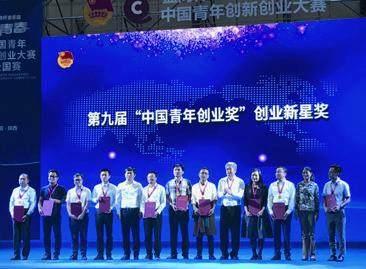ALPINE DREAMS COME TRUE
2021-06-04ByLiXiaoyang
By Li Xiaoyang

Near the Ramoche Temple in Lhasa, Tibet Autonomous Region, one of the most important Buddhist shrines in the city, there is a more modern attraction as well. Its called Milam, which means “dream” in the Tibetan language. Its a boutique selling clothes and accessories such as T-shirts, sweaters, belts and wallets, and customers flock in despite the modest exterior, drawn by the distinctive designs and affordable prices.
The products designed by Tsering Tashi, the owner of the boutique, and his team, while different from traditional Tibetan clothes, still feature elements of Tibetan culture.
Though only in his 20s, Tsering Tashi had tried his hand at various things before deciding to start afresh with Milam. Prior to that he worked as a teacher in Lhasa after graduating from Shanghai Normal University. In 2014, he founded a cultural communication company. Finally, he started Milam Clothing Co. Ltd. in 2015 as in his view, clothing is the most basic and most visible carrier of Tibetan culture.
Now the company has stores not only in cities in Tibet including Xigaze and Nagqu, but also in neighboring Qinghai and Sichuan provinces. The monthly sales at the Lhasa store alone are around 300,000 yuan($46,693). The company has 36 employees, including 24 college graduates. Tsering Tashi has also developed an individual childrens clothing brand, OLOLO.
In 2018, he expanded his business, setting up a tea company, followed by an extracurricular education company this year. He won an award for outstanding young Chinese entrepreneurs in 2019.
“Although entrepreneurship carries more unpredictability, I like this kind of life. Since clothes are a basic carrier of culture, I want to make some contribution to promoting Tibetan culture and characters through our products,” he told Beijing Review.
Learning from experience
Tsering Tashi developed an interest in garment designing and business as a college student. While majoring in education technology in Shanghai Normal University, he chose to focus on designing. While studying, he also wanted to do something to earn money. Following the example of street vendors near his school, he started to sell caterpillar fungus or Cordyceps sinensis, a herb believed to have invigorating properties. He sold the fungus on e-commerce platform Taobao and the experience sowed the seeds of his current career.
After graduation, he worked as a computer and English teacher, saved money and thought about starting his own business. One year later, when he resigned from the teaching job to start his own company, he had around 20,000 yuan ($3,106) to invest, partly saved from his job and partly loaned by friends. He was also able to get a loan of 100,000 yuan ($15,565) from the Peoples Government of Lhasa.
